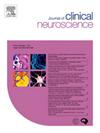Direct transfer to angiosuite vs conventional workup for stroke: A systematic review and meta-analysis
IF 1.9
4区 医学
Q3 CLINICAL NEUROLOGY
引用次数: 0
Abstract
Background
Reducing the stroke time metric in patients with stroke who underwent thrombectomy is associated with good functional recovery. We compared direct transfer to angiosuite (DTAS) vs conventional workup (CWU) in patients who underwent endovascular treatment due to large vessel occlusion (LVO).
Methods
A systematic search was conducted in four electronic databases. The continuous outcomes were analyzed using the standardized mean difference (SMD) and 95 % CI, while the binary outcomes were analyzed using the odds ratio (OR) and 95 % confidence interval (CI).
Results
We included a total of 3145 patients, which 1168 patients were in DTAS group and 1977 were in CWU group. DTAS showed a significantly higher likelihood of 90-day mRS0-1 (OR 1.6, p = 0.002) and mRS0-2 (OR 1.47, p < 0.0001), successful reperfusion (OR 1.53, 95 % CI 1.1 to 2.1, p = 0.0122), and lower door-to-puncture (SMD −4.36, 95 % CI −7.4 to −1.3, p = 0.0096) than CWU. There was no significant difference between the two triage protocols in 90-day mortality (OR 0.98, 95 % CI 0.6 to 1.64, p = 0.94) and symptomatic intracranial hemorrhage (OR 0.78, p = 0.14). The proportion of patients who were triaged to DTAS with non-LVO on diagnostic angiography in angiosuite was 5.76 % (95 % CI 1.8 % to 11.4 %). There was a significant difference between randomized trials versus observational studies in 90-day mRS0-2 (OR 1.91 vs 1.16, p = 0.0042), 90-day mortality (OR 0.62 vs 1.27, p = 0.12), and door-to-puncture time (SMD −1.25 vs −5.53, p = 0.027).
Conclusion
DTAS is a feasible, safe, and cost-effective triage approach for managing patients with acute stroke due to LVO.
求助全文
约1分钟内获得全文
求助全文
来源期刊

Journal of Clinical Neuroscience
医学-临床神经学
CiteScore
4.50
自引率
0.00%
发文量
402
审稿时长
40 days
期刊介绍:
This International journal, Journal of Clinical Neuroscience, publishes articles on clinical neurosurgery and neurology and the related neurosciences such as neuro-pathology, neuro-radiology, neuro-ophthalmology and neuro-physiology.
The journal has a broad International perspective, and emphasises the advances occurring in Asia, the Pacific Rim region, Europe and North America. The Journal acts as a focus for publication of major clinical and laboratory research, as well as publishing solicited manuscripts on specific subjects from experts, case reports and other information of interest to clinicians working in the clinical neurosciences.
 求助内容:
求助内容: 应助结果提醒方式:
应助结果提醒方式:


